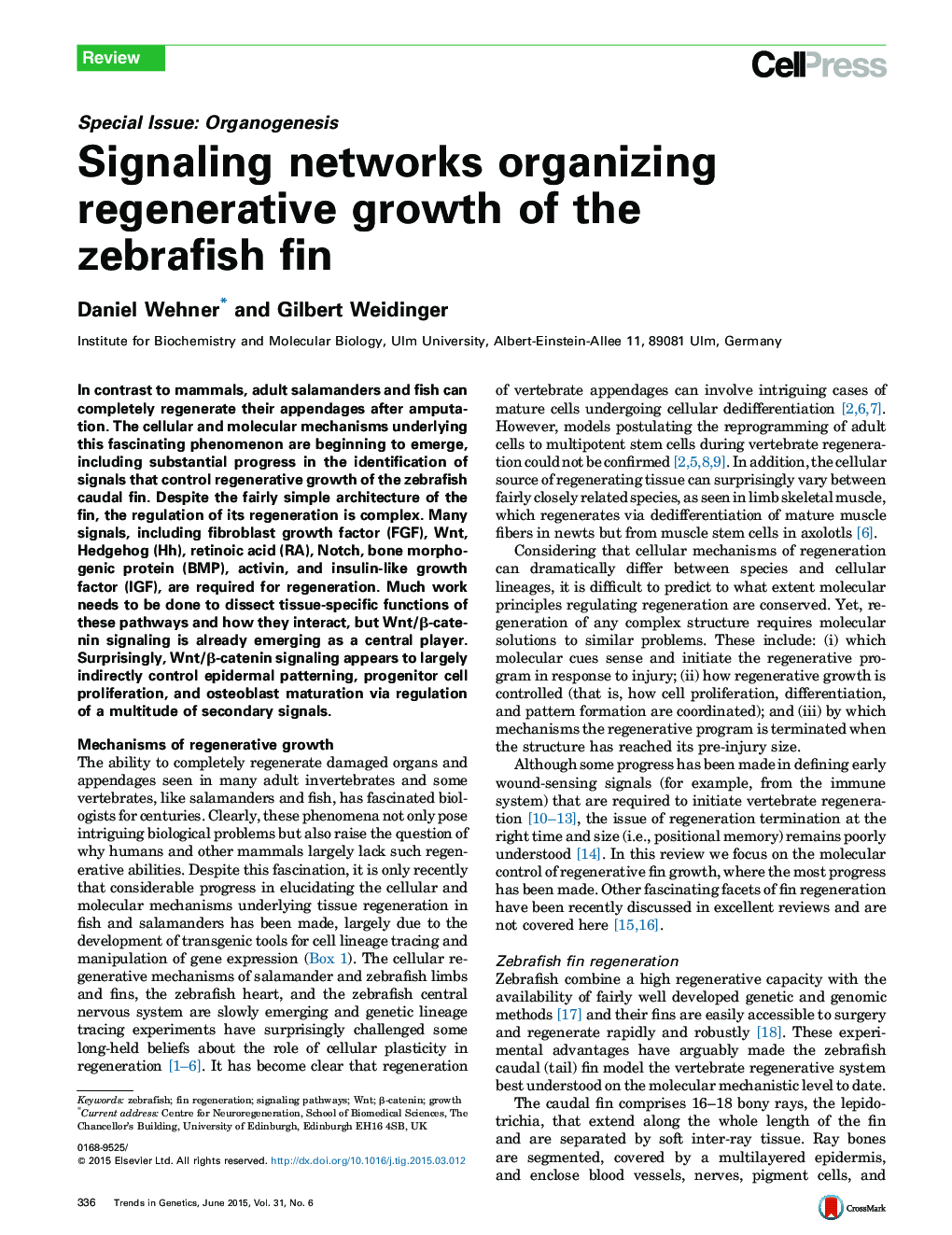| کد مقاله | کد نشریه | سال انتشار | مقاله انگلیسی | نسخه تمام متن |
|---|---|---|---|---|
| 2824730 | 1161850 | 2015 | 8 صفحه PDF | دانلود رایگان |
• The zebrafish fin is an excellent model for molecular regulation of regenerative growth.
• Growth requires coordinated cell proliferation, differentiation, and tissue patterning.
• A surprising number of signaling pathways is required for regeneration.
• Wnt/β-catenin signaling orchestrates growth by controlling secondary signals.
In contrast to mammals, adult salamanders and fish can completely regenerate their appendages after amputation. The cellular and molecular mechanisms underlying this fascinating phenomenon are beginning to emerge, including substantial progress in the identification of signals that control regenerative growth of the zebrafish caudal fin. Despite the fairly simple architecture of the fin, the regulation of its regeneration is complex. Many signals, including fibroblast growth factor (FGF), Wnt, Hedgehog (Hh), retinoic acid (RA), Notch, bone morphogenic protein (BMP), activin, and insulin-like growth factor (IGF), are required for regeneration. Much work needs to be done to dissect tissue-specific functions of these pathways and how they interact, but Wnt/β-catenin signaling is already emerging as a central player. Surprisingly, Wnt/β-catenin signaling appears to largely indirectly control epidermal patterning, progenitor cell proliferation, and osteoblast maturation via regulation of a multitude of secondary signals.
Journal: - Volume 31, Issue 6, June 2015, Pages 336–343
